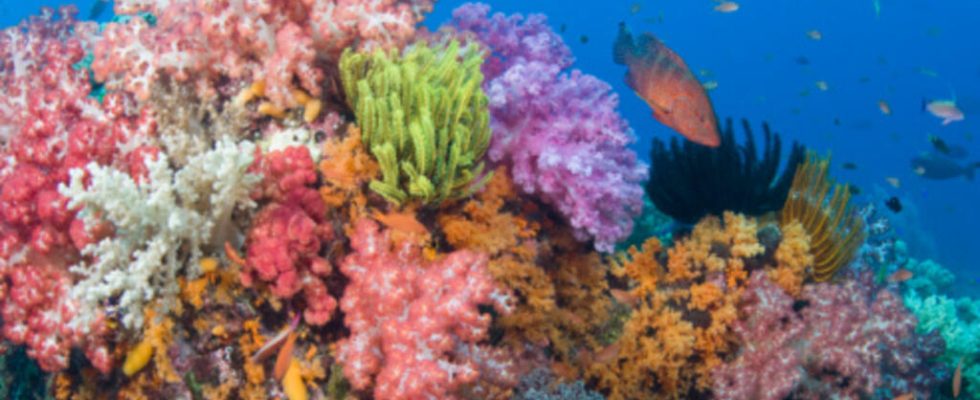Already severely weakened by the effects of climate change (warmer, more acidic oceans and the increase in cyclones), corals, rich in incredible biodiversity, are also threatened by pollution linked to human activities. Requested by the French government, the National Health Security Agency (ANSES) identified in a study around twenty chemical compounds which present a risk for coral reefs.
1 min
Hydrocarbons, found for example in industrial oils or greases, pesticides, such as chlordecone which polluted banana plantations in the West Indies, metals or even UV filters present in sun creams: out of around fifty chemical substances that ANSES was able to assess in overseas marine areas, half of which may present risks for coral reefs and contribute to their degradation.
“ What we have identified as potentially toxic for corals are different types of effects: coral mortality, growth problems, bleaching, fertility, etc. », Explains Aurélie Mathieu who coordinated this Anses report.
And marine monitoring data was not available for all overseas territories, or even for all potentially toxic substances… ” We were able to carry out the risk assessment only in Guadeloupe, Martinique, Reunion Island and Mayotte. For all the other overseas territories, we were unable to carry out risk assessments due to lack of data and therefore this may indeed be just the tip of the iceberg. »
To relieve corals, already in danger of extinction because of our carbon dioxide emissions, the agency recommends reducing pollution at source, restricting the use of certain toxic substances at European level, and limiting discharges into the sea, in particular by improving wastewater treatment systems.
